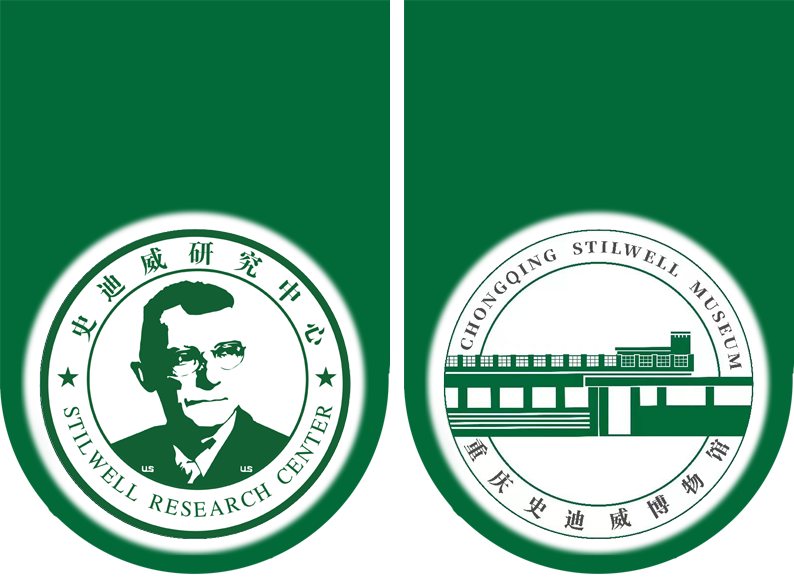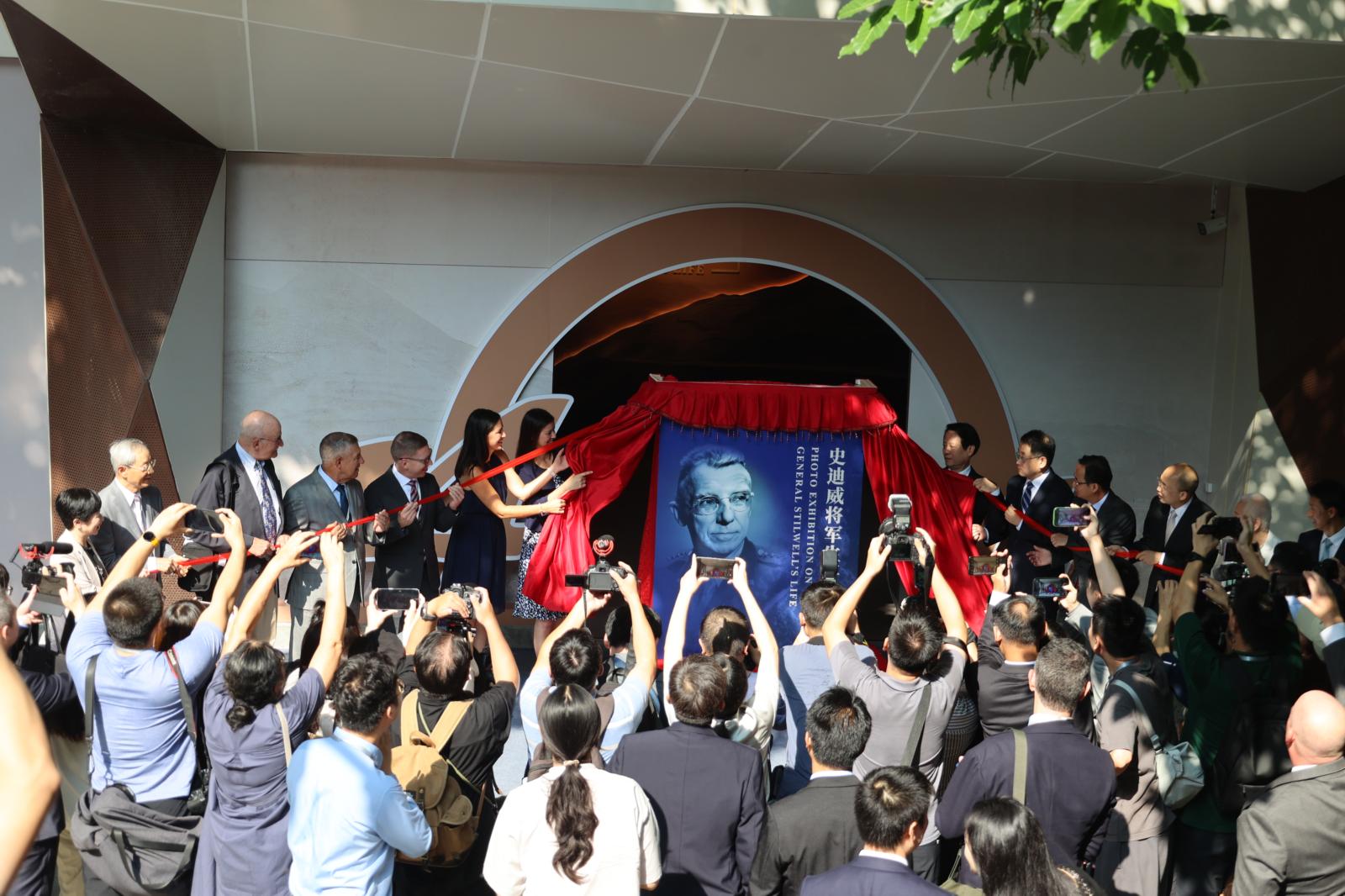品|藏 史迪威使用过的汉语学习书籍
收藏 |史迪威使用的汉语学习书籍
|藏品·Collections| |藏品·产品系列|
汉语学习书籍(5本)
Five Chinese Language Learning Books
五本汉语学习书籍
1994年南希·史迪威·伊斯特布鲁克捐赠
Donated by Nancy Stilwell Easterbrook in 1994
南希·史迪威·伊斯特布鲁克(Nancy Stilwell Easterbrook)于1994年捐赠
-
《英华合璧》(上卷) / A Mandarin Primer (Volume One)
《英华合璧》(上卷) / A Mandarin Primer (Volume One)

成书于1878年,作者为英国内地会传教士鲍康宁,是专门为传教士编写的中文学习教材,包括简单的课程和练习。博物馆所收藏为1919年发行版本。该书封面有史迪威中文和英文的签名,书中也有史迪威用铅笔勾画的学习笔迹。
A Mandarin Primer was written by Frederick William Baller in 1878, a British missionary to the China Inland Mission. It is a Chinese learning textbook specially designed for missionaries, including several simple Chinese language lessons and exercises. The copy held by our museum is the 1919 edition, with Stilwell’s signatures in Chinese and English on the cover page. It also contains his study notes written in pencil.
《普通话入门》由英国传教士弗雷德里克·威廉·巴勒(Frederick William Baller)于1878年撰写。这是一本专门为传教士设计的中文学习教科书,包括几节简单的中文课程和练习。我们博物馆收藏的副本是 1919 年版,封面上有史迪威的中英文签名。它还包含他用铅笔写的学习笔记。
-
《六百字编通俗教育识字课本》《六百字编通俗教育读本》 / 600 Characters Primer & 600 Characters Reader


属于六百字编通俗教育教材系列。董景安编著,他是中国近代扫盲教育界的先驱人物。识字课本选取最浅要的600个字,编成通俗教育的系列教科书,引导读者识字,组词造句。教育读本主要用于识字教育之后的巩固提升,内含卫生、伦理、修身、正俗、爱国、地文、信函等7个主题。博物馆所收藏的为第二册“正俗、爱国、地文”。该书封面有史迪威的铅笔手写签名。
The books are part of the “600 Characters” literacy education series, compiled by Dong Jing’an, a pioneer in modern Chinese literacy education. The Primer is compiled using the most basic 600 Chinese characters to help learners recognize words and use vocabulary. The Reader is designed for reinforcing learners’ skills after they receive literacy education, including 7 themes such as health, ethics, self-cultivation, decorum, patriotism, physiography, and correspondence. The copy held by our museum is the second volume, containing chapters “decorum, patriotism, and physiography.” The book cover was signed by Stilwell in pencil.
这些书是“600字”识字教育系列的一部分,由现代中国识字教育的先驱董静安编纂。入门书使用最基本的 600 个汉字编写,以帮助学习者识别单词和使用词汇。读物旨在加强学习者在接受识字教育后的技能,包括健康、道德、修身、礼仪、爱国主义、生理学和通信等 7 个主题。我们博物馆收藏的副本是第二卷,包含“礼仪、爱国主义和生理学”章节。书的封面由史迪威用铅笔签名。
-
《三言杂字四言杂字》(合订本) / Selected Three-Chacacter and Four-Character Verses (Combined Edition)
《三言杂字四言杂字》(合订本) / Selected Three-Chacacter and Four-Character Verses (Combined Edition)

杂字书是启蒙识字读物的一种,以常见的事物编辑成三言、四言、五言等,大多按照韵律编排。博物馆收藏的合订本封面为“刘海戏蟾”图样,内页有文字与配图。
Character primers, or “zazishu”, are a type of early literacy primers where everyday objects are arranged into verses
汉字入门,或称“zazishu”,是一种早期识字入门,其中日常物品被排列成诗句
of three, four, or five characters, typically following rhythmic patterns. The combined edition housed in our museum features the Chinese legend “Liu Hai and the Toad” on the cover, accompanied by textual descriptions and illustrations inside.
三个、四个或五个字符,通常遵循节奏模式。收藏在我们博物馆的组合版封面上有中国传说“刘海和蟾蜍”,里面有文字描述和插图。
-
《忠王日记》 / Diary of the Zhong Wang

该书内容是“忠王”李秀成被抓捕后在狱中写下的供词,讲述了太平天国的兴衰。之后曾国藩将李秀成所写供词删改,命人抄写二份,一份送清廷军机处,另一份则交其子曾纪泽保存,并于安庆刻板付梓曰《李秀成供》,即“九如堂本”,也是博物馆所收藏的版本。封面中英文文字由手工书写而成,应是后期人为制作,右下角为史迪威本人签名。书中第二页写有“Compliment of Monlin Chiang 1936”,为蒋梦麟所赠送。
Diary of the Zhong Wang features a confession by Zhong Wang (Li Hsiu-cheng) written in confinement after he was captured, telling the rise and fall of the Taiping Heavenly Kingdom. The confession was later edited by Tseng Kuo-fan and transcribed into two copies, one sent to the Office of Military and Political Affairs (Qing Dynasty). The other was kept by his son, Tseng Chi-tse, which was then published in Anqing as Li Hsiu-cheng’s Confession, also known as the “Jiurutang Version”. This is the edition held by our museum. The cover, featuring hand-written Chinese and English texts, was likely a manual production later on. At the bottom right corner, there is a signature of Stilwell himself. On the second page, the inscription “Compliment of Monlin Chiang 1936” indicates that it was a gift from Chiang Mon-lin.
《钟王日记》收录了钟王(李秀成饰)被俘后在狱中写的忏悔书,讲述了太平天国的兴衰。该供词后来由曾国藩编辑并抄录成两份,一份送往军事和政治事务办公室(清代)。另一份由他的儿子曾志梓保存,后来在安庆出版,名为《李秀成忏悔录》,又称《九如堂本》。这是我们博物馆举办的版本。封面上有手写的中文和英文文本,很可能是后来手工制作的。在右下角,有史迪威本人的签名。在第二页上,铭文“1936年蒋介石的赞美”表明这是蒋介石的礼物。
“史迪威是一位语言学家。”2023年8月在重庆举行的纪念史迪威将军诞辰140周年研讨会上,史迪威将军的外曾孙女苏珊·科尔和南希·米尔沃德这样谈及她们的外曾祖父。她们的祖母就是捐赠书籍的南希·史迪威·伊斯特布鲁克。
“Stilwell was a linguist,” said Susan Cole and Nancy Millward, great-grandaughters of General Stilwell, at the symposium to commemorate the 140th anniversary of General Stilwell's birth held in Chongqing in August 2023. Their grandmother is Nancy Stilwell Easterbrook, who donated the books.
2023年8月,史迪威将军的曾孙女苏珊·科尔(Susan Cole)和南希·米尔沃德(Nancy Millward)在重庆举行的史迪威将军诞辰140周年座谈会上说:“史迪威是一位语言学家。他们的祖母是南希·史迪威·伊斯特布鲁克(Nancy Stilwell Easterbrook),她捐赠了这些书。
史迪威早在西点军校时就学习了法语和西班牙语。1919年8月6日,他被任命为代表美国陆军的驻华首任语言教官,在加利福利亚大学伯克利分校学习了近一年的中文。但他后来到北京才发现自己学的是广东话,于是重新开始学习普通话。“我们的祖母还记得他坐在书桌前,用中文字典查词的情景。”
Stilwell studied French and Spanish while at West Point. On August 6, 1919, he became the U.S. Army’s first Chinese language student, and studied Chinese for nearly a year at the University of California, Berkeley. However, when he arrived in Beijing, he realized what he had learned was indeed Cantonese, so he started learning Mandarin again. “Our grandmother still remembers him sitting at his desk, looking words up in the Chinese dictionary.”
史迪威在西点军校学习法语和西班牙语。1919年8月6日,他成为美国陆军第一位汉语学生,并在加州大学伯克利分校学习了近一年的汉语。然而,当他到达北京时,他意识到自己学到的确实是广东话,于是他又开始学习普通话。“我们的祖母还记得他坐在书桌前,在汉语词典里查单词。
“史迪威”这个中文名字就是1920年他在北平读语言学校时他的中文家庭老师管文纯取的,史迪威又给他的两个女儿取了中文名字——史文思和史文森。
Stilwell’s Chinese name “史迪威” was given by Guan Wenchun, his Chinese tutor, when he was studying at a language school in Beijing in 1920. Later on, Stilwell chose the Chinese names for his two daughters —“史文思” and “史文森”.
史迪威的中文名字“史迪威”是1920年在北京一所语言学校读书时,他的中文导师关文春给他起的。后来,史迪威为他的两个女儿取了中文名字——“史文思”和“史文森”。
文字/王昕蕊
Content/Wang Xinrui 内容/王新瑞
翻译/温立静
Translate /Wen Lijing 翻译 /温 Lijing
排版/邱小珏
Typography/Qiu Xiaojue 排版/邱晓珏
审核/杨罕亭 张顺莉
Check/Yang Hanting, Zhang Shunli
查看/杨汉婷, 张顺利













